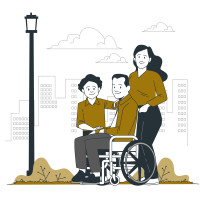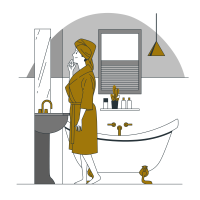The Palatine Museum

The Palatine Museum is housed in the former convent of the Visitation, built in 1868 on the ruins of Domitian's palace. It was here that the archaeologist Alfonso Bartoli created his new Antiquario Palatino in the 1930s. To make room for the development of the current archaeological excavations on the hilltop, Bartoli demolished a neo-Gothic building built on the top by the Scottish architect Charles Andrew Mills.
In 1882, and then again during the years of the Second World War, most of the finds from the various excavations carried out on the Palatine in the second half of the nineteenth century were transferred to the Museo delle Terme (di Diocleziano). Only a small part of this collection was permanently returned to the Palatine at the end of the war. In the 1990s, on the occasion of the Bimillennium of Augustus, it was reorganised and reconstructed, making it more accessible thanks to multimedia installations.
The plan is divided into two levels. The lower level is made up of rooms that preserve the layout of the former domus and recount the events that took place on the hill from the foundation of Rome to the establishment of the Principate in the 1st century BC. In room VI you can see artefacts from the time of Augustus, the first emperor to change the face of the Palatine. Next door in room VII are beautiful mosaics and some great paintings from Nero's house before his more famous Golden House.
Services and Accessibility

Wheelchair accessible

Toilets

